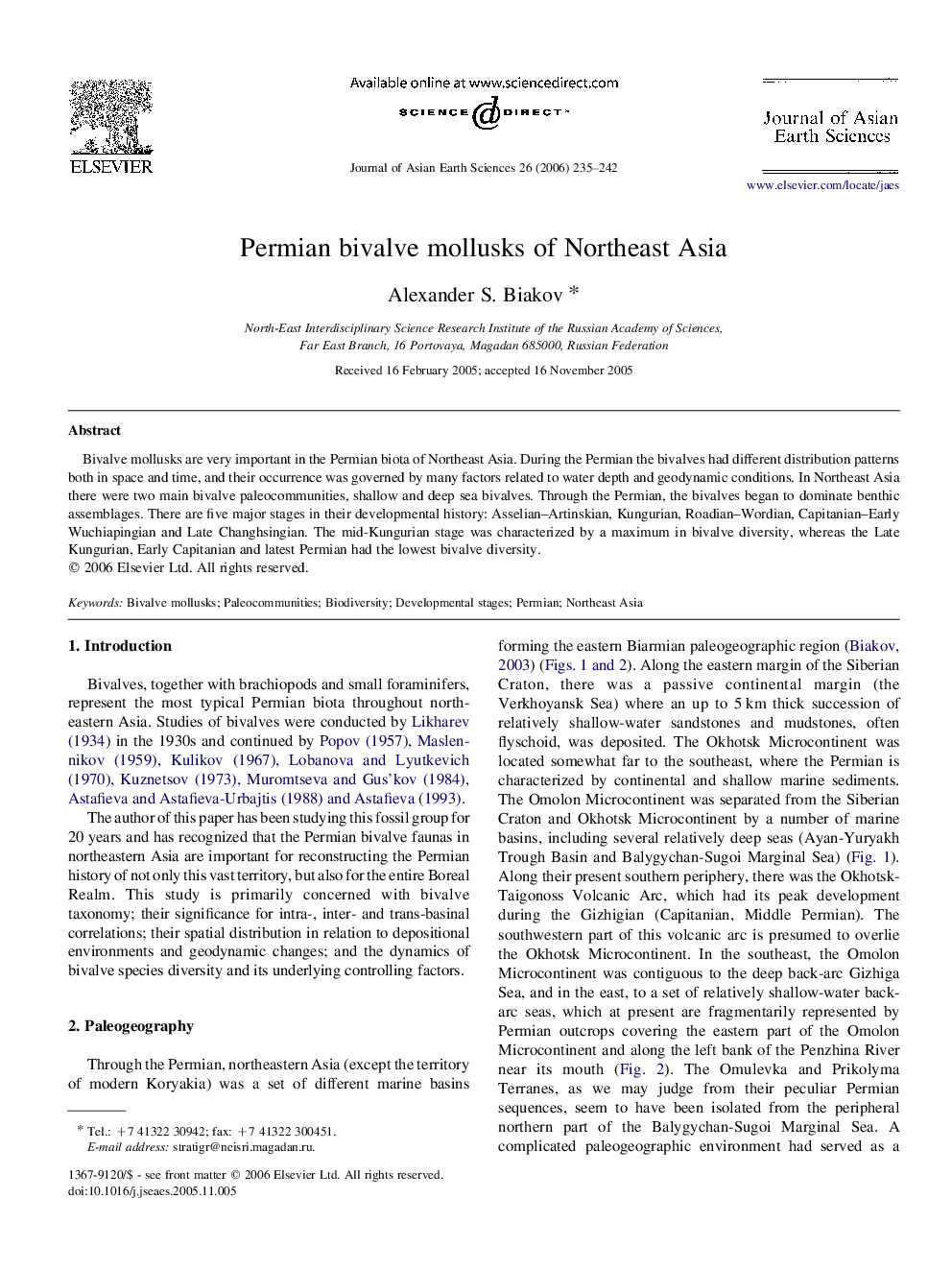| Article ID | Journal | Published Year | Pages | File Type |
|---|---|---|---|---|
| 4732605 | Journal of Asian Earth Sciences | 2006 | 8 Pages |
Bivalve mollusks are very important in the Permian biota of Northeast Asia. During the Permian the bivalves had different distribution patterns both in space and time, and their occurrence was governed by many factors related to water depth and geodynamic conditions. In Northeast Asia there were two main bivalve paleocommunities, shallow and deep sea bivalves. Through the Permian, the bivalves began to dominate benthic assemblages. There are five major stages in their developmental history: Asselian–Artinskian, Kungurian, Roadian–Wordian, Capitanian–Early Wuchiapingian and Late Changhsingian. The mid-Kungurian stage was characterized by a maximum in bivalve diversity, whereas the Late Kungurian, Early Capitanian and latest Permian had the lowest bivalve diversity.
